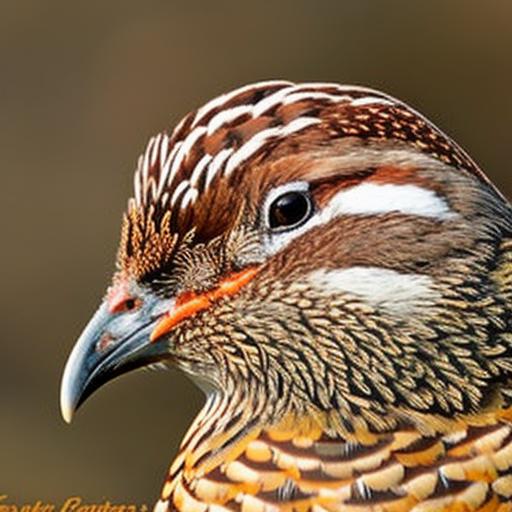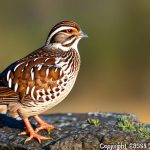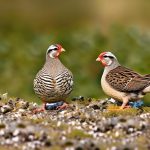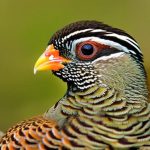Keeping Bobwhite quail and hens together can be a rewarding experience for poultry enthusiasts. Bobwhite quail are known for their distinctive call and beautiful plumage, while hens are valued for their eggs and meat. When kept together, these birds can create a harmonious and diverse flock that adds interest and variety to any poultry operation. However, it’s important to understand the behavior, environmental needs, feeding requirements, health considerations, and breeding habits of both species in order to successfully keep them together. In this article, we will explore these aspects in detail to help you create a suitable environment for keeping Bobwhite quail and hens together, ensuring their health, safety, and well-being.
Key Takeaways
- Bobwhite quail and hens can be kept together, but it requires careful planning and understanding of their behavior.
- Understanding the behavior of bobwhite quail and hens is crucial for creating a suitable environment for them to live together harmoniously.
- Providing a suitable environment for bobwhite quail and hens includes providing adequate space, shelter, and nesting areas.
- Feeding and nutrition for bobwhite quail and hens should be carefully balanced to meet their specific dietary needs.
- Health and safety considerations for keeping bobwhite quail and hens together include disease prevention and predator-proofing their living space.
Understanding the Behavior of Bobwhite Quail and Hens
Bobwhite quail are ground-dwelling birds that are known for their social nature. They are typically found in small flocks and have a strong pecking order within their group. These birds are also known for their distinctive call, which is often used to communicate with other members of their flock. On the other hand, hens are also social animals that thrive in the company of other birds. They have a strong instinct to form a pecking order within their flock and establish a hierarchy. Understanding the behavior of both Bobwhite quail and hens is crucial when keeping them together. It’s important to provide enough space for both species to establish their pecking order without causing excessive aggression or stress. Additionally, providing hiding spots and areas for retreat can help minimize conflicts between the birds. By understanding the behavior of both species, you can create a harmonious environment where Bobwhite quail and hens can coexist peacefully.
Creating a Suitable Environment for Bobwhite Quail and Hens
Creating a suitable environment for Bobwhite quail and hens involves providing adequate space, shelter, and amenities to meet the needs of both species. Bobwhite quail require a habitat with plenty of ground cover, such as grass, shrubs, and low-lying vegetation. They also need access to dust baths to help maintain their plumage and control parasites. Hens, on the other hand, require nesting boxes for laying eggs, perches for roosting, and access to outdoor areas for foraging. When keeping these birds together, it’s important to provide separate areas for nesting and roosting to prevent conflicts between the species. Additionally, ensuring that the environment is predator-proof is essential for the safety of both Bobwhite quail and hens. By creating a suitable environment that meets the needs of both species, you can promote their well-being and minimize stress.
Feeding and Nutrition for Bobwhite Quail and Hens
Feeding and nutrition are crucial aspects of keeping Bobwhite quail and hens together. Both species have specific dietary requirements that need to be met in order to maintain their health and productivity. Bobwhite quail are primarily ground foragers that consume a diet of seeds, insects, and vegetation. They require a high-protein diet to support their growth, reproduction, and feather quality. Hens, on the other hand, require a balanced diet that includes a mix of grains, protein, vitamins, and minerals to support egg production and overall health. When keeping these birds together, it’s important to provide a well-balanced diet that meets the nutritional needs of both species. Additionally, providing access to grit and calcium supplements is essential for hens to support eggshell formation and overall health. By understanding the specific feeding requirements of both Bobwhite quail and hens, you can ensure that they receive the necessary nutrients to thrive in a shared environment.
Health and Safety Considerations for Keeping Bobwhite Quail and Hens Together
Maintaining the health and safety of Bobwhite quail and hens is essential when keeping them together. Both species are susceptible to various diseases, parasites, and environmental stressors that can impact their well-being. It’s important to monitor the flock regularly for signs of illness or injury and provide prompt veterinary care when needed. Additionally, ensuring that the environment is clean, dry, and well-ventilated can help prevent the spread of disease and minimize stress on the birds. Providing access to clean water at all times is also crucial for maintaining hydration and overall health. When keeping these birds together, it’s important to be mindful of potential conflicts or aggression between the species. Providing enough space, hiding spots, and separate areas for nesting and roosting can help minimize stress and prevent injuries. By prioritizing the health and safety of both Bobwhite quail and hens, you can create a thriving flock that is less susceptible to disease and environmental stressors.
Breeding and Reproduction of Bobwhite Quail and Hens
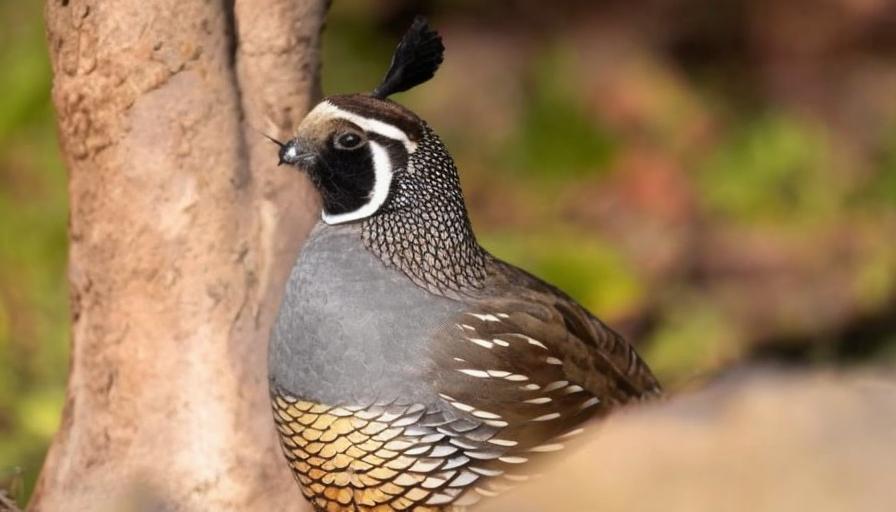
Breeding and reproduction are natural behaviors exhibited by both Bobwhite quail and hens when kept together. Bobwhite quail are known for their monogamous mating behavior, with pairs forming strong bonds during the breeding season. They typically build ground nests in concealed locations to protect their eggs from predators. Hens, on the other hand, are prolific layers that require suitable nesting boxes to lay their eggs. When keeping these birds together, it’s important to provide adequate nesting areas that meet the specific needs of both species. Additionally, monitoring the breeding behavior of both Bobwhite quail and hens can help ensure successful reproduction and minimize potential conflicts within the flock. Providing access to clean, fresh bedding in nesting areas is essential for maintaining egg quality and minimizing the risk of disease transmission. By understanding the breeding behavior of both species and providing suitable nesting areas, you can promote successful reproduction within your flock.
Conclusion and Tips for Successful Bobwhite Quail and Hens Keeping
In conclusion, keeping Bobwhite quail and hens together can be a rewarding experience when done thoughtfully and responsibly. Understanding the behavior, environmental needs, feeding requirements, health considerations, and breeding habits of both species is essential for creating a suitable environment where they can coexist peacefully. Providing adequate space, shelter, feeding areas, and nesting boxes that meet the specific needs of both Bobwhite quail and hens is crucial for promoting their well-being and minimizing potential conflicts within the flock. Additionally, prioritizing the health and safety of both species through regular monitoring, veterinary care, clean environments, and access to clean water is essential for maintaining a thriving flock. By following these tips and guidelines, you can successfully keep Bobwhite quail and hens together while enjoying the unique characteristics of each species within your poultry operation.
If you’re considering keeping bobwhite quail and hens together, it’s important to ensure that they have a suitable living environment. A well-designed chicken coop can provide the necessary space and protection for both species. For tips on creating an ideal coop for your birds, check out this informative article on poultrywizard.com. It offers valuable insights into designing a coop that meets the needs of both quail and hens, ensuring their health and well-being.
FAQs
What is the best way to keep bobwhite quail and hens together?
The best way to keep bobwhite quail and hens together is to provide a spacious and secure enclosure that allows for separate areas for the quail and hens to roost and nest. It is important to ensure that the quail and hens have access to their own food and water sources to prevent competition and aggression.
What should be considered when keeping bobwhite quail and hens together?
When keeping bobwhite quail and hens together, it is important to consider the size of the enclosure, the compatibility of the species, and the availability of separate roosting and nesting areas. Additionally, providing adequate food and water sources for both species is crucial for their health and well-being.
Are there any potential challenges when keeping bobwhite quail and hens together?
One potential challenge when keeping bobwhite quail and hens together is the risk of aggression and competition for resources. It is important to monitor the behavior of both species and make adjustments to the enclosure or management practices if any issues arise.
What are the benefits of keeping bobwhite quail and hens together?
Keeping bobwhite quail and hens together can provide benefits such as natural pest control, increased biodiversity, and a more dynamic and interesting environment for the birds. Additionally, the presence of multiple species can create a more balanced ecosystem within the enclosure.
How can I ensure the safety and well-being of bobwhite quail and hens when kept together?
To ensure the safety and well-being of bobwhite quail and hens when kept together, it is important to provide a secure enclosure that prevents escape and protects the birds from predators. Additionally, monitoring the behavior of the birds and providing appropriate food, water, and shelter are essential for their health and welfare.
Meet Walter, the feathered-friend fanatic of Florida! Nestled in the sunshine state, Walter struts through life with his feathered companions, clucking his way to happiness. With a coop that’s fancier than a five-star hotel, he’s the Don Juan of the chicken world. When he’s not teaching his hens to do the cha-cha, you’ll find him in a heated debate with his prized rooster, Sir Clucks-a-Lot. Walter’s poultry passion is no yolk; he’s the sunny-side-up guy you never knew you needed in your flock of friends!

